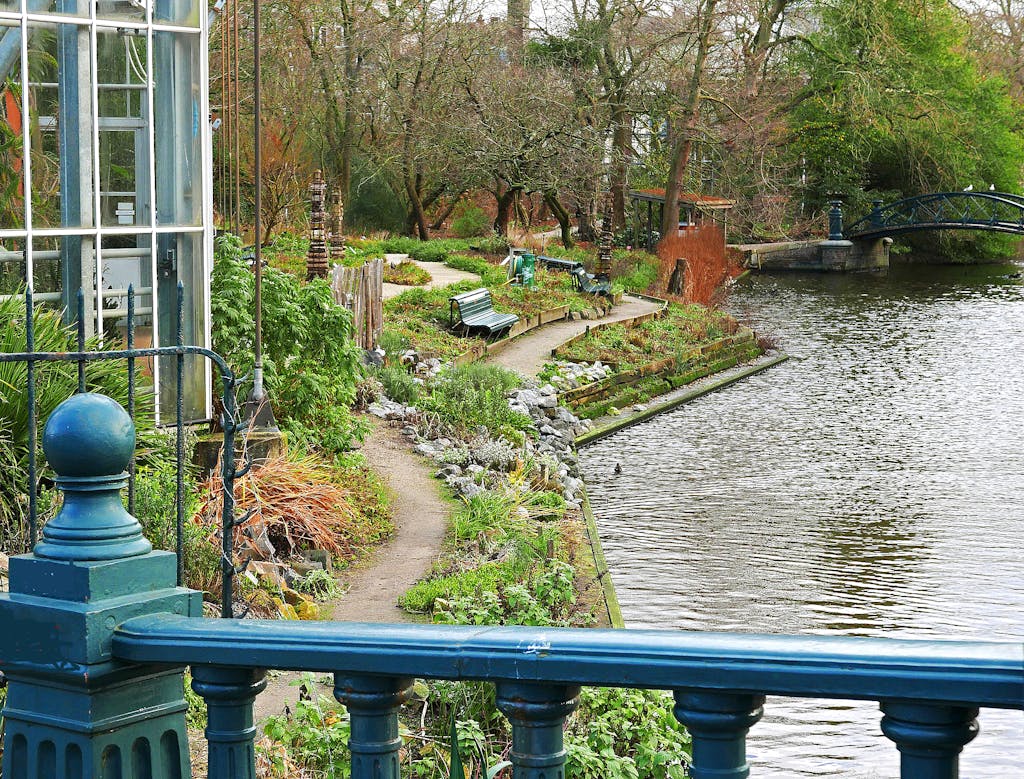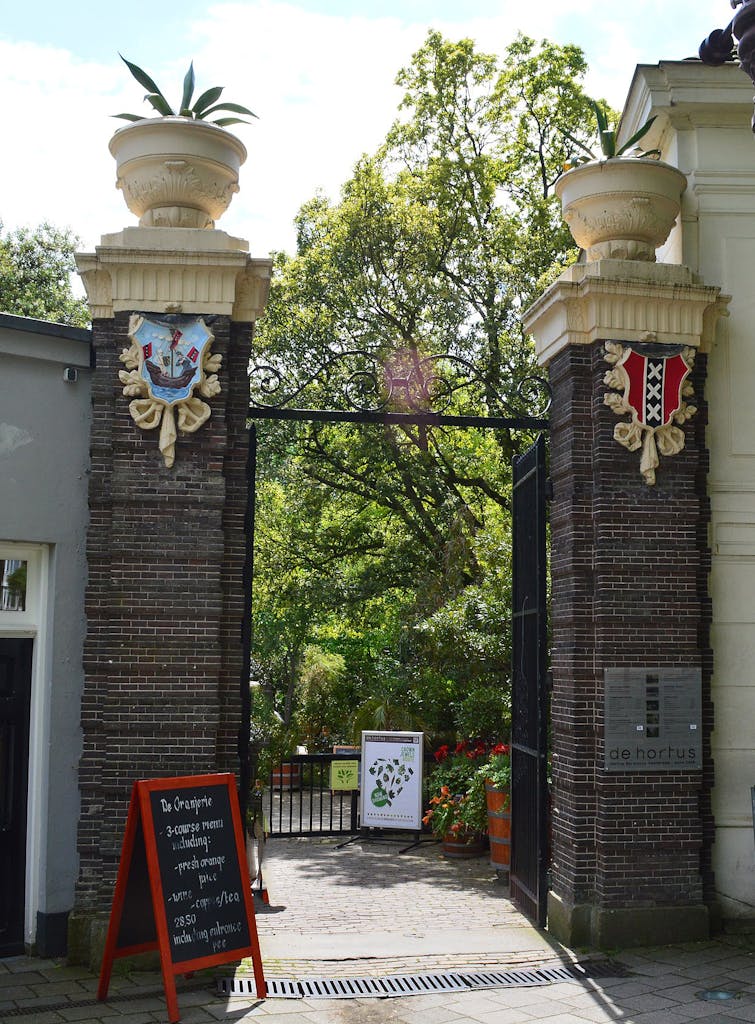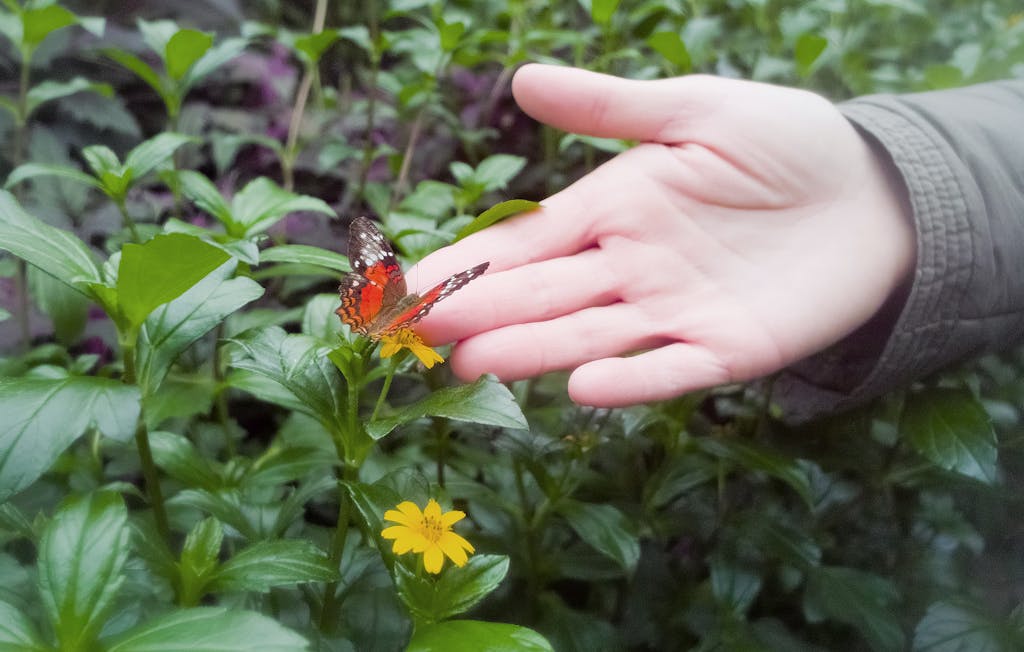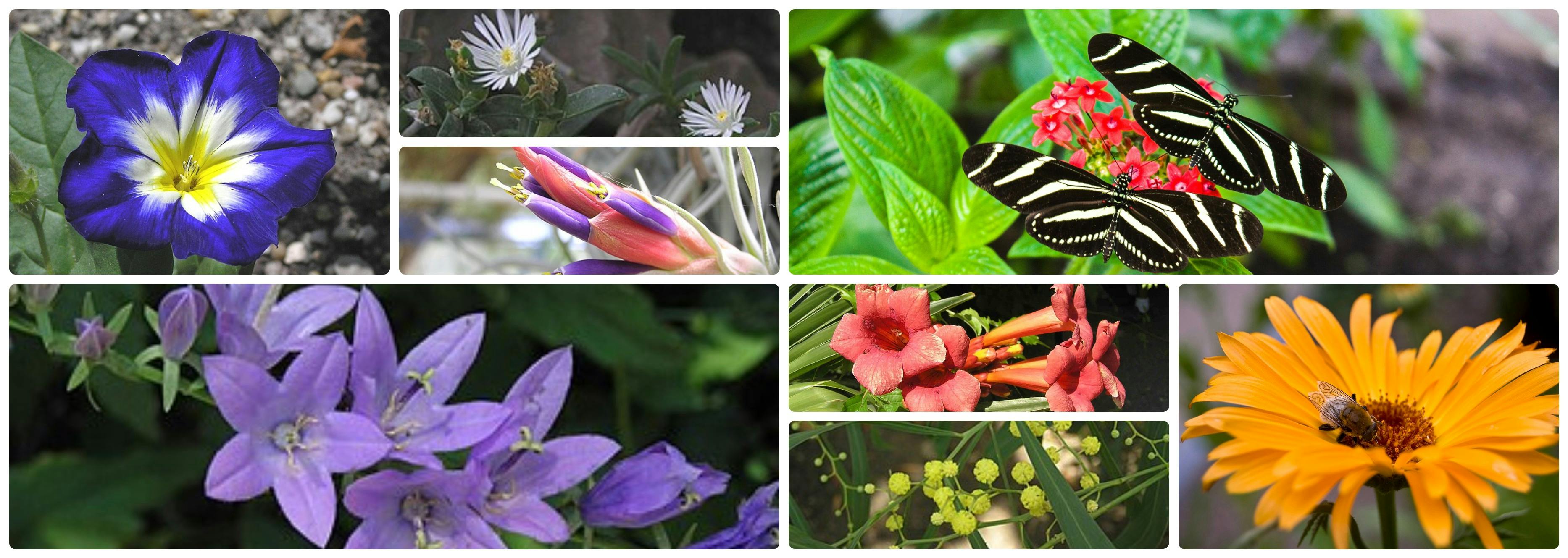Amsterdam’s Botanic Garden Is a Place of Light That Grew from the Dark
A lush grove of conifers gives way to hardy shrubs, beds of radiant orchids, clusters of stinging nettles, and a pond cloaked in water lilies. In a matter of minutes, it feels as if I’ve traversed dunes, meadows, wetlands, forests and heaths but all in the heart of downtown Amsterdam.
That’s because Amsterdam’s botanic garden contains plant species from each of the Netherlands’ regions. The country may be tiny — it’s slightly larger than Hawaii in land area – but it has an array of distinctive landscapes.
Some travelers never visit this natural bounty and instead fly in and out of Amsterdam on busy, city-focused European trips. I also was in a rush, so I wouldn’t have time to hike the North Holland Dune Reserve, photograph the mudflats of the Wadden Sea or admire deer prancing the woodlands of DeHoge Veluwe National Park.
But I could savor a sliver of each at Amsterdam’s historic Hortus Botanicus, one of the world’s oldest botanical gardens. It showcases 6,000 species of indigenous and non-indigenous plants. Since it opened in 1638, this facility has led scientific research, grown key medicinal plants and even tried to repel a lethal opponent.
Petite but powerful

Tourists can wander its shady garden, explore its five hothouses (each of which mimics a different climate), and replenish at the Orangery cafe. This former glasshouse, soaked in natural light, offers light treats such as watermelon salad, avocado toast and nettle (yes, with nettles) cheese on sourdough.
It is a popular breakfast and lunch venue for locals. As I unwound here, sipping cappuccino and enjoying some carrot cake, I spotted few tourists. In a city brimming with attractions – Amsterdam has more than 80 museums – it’s easy for a botanic garden to evade notice.
Especially one that is so petite. At just 3 acres, Hortus Botanicus is dwarfed by London’s 300-acre Kew Gardens, Germany’s 126-acre Botanic Garden Berlin-Dahlem, Paris’ 68-acre Jardin des Plantes, and Spain’s 20-acre Royal Botanic Gardens Madrid.
Hortus Botanicus sits on the eastern fringe of Amsterdam’s tourist precinct and is a gateway to other sites. This compact area is bordered by teeming Amsterdam Central station to the north, somber Anne Frank House to the west, sprawling Vondelpark to the south and impressive Amsterdam Museum to the east.
An accidental discovery

I came across Hortus Botanicus quite by accident. After delving into the collections of the National Maritime Museum, I followed the pretty Nieuwe Herengracht canal south, and headed for Amsterdam Museum. Then, on my left, between a row of ivy-draped heritage buildings, I spied a narrow gate decorated by a red, black, and white crest emblazoned with “XXX”.
This is Amsterdam’s coat of arms, but it has no lurid symbolism. There are several popular tales about the meaning of that logo, including one tied to the remarkable history of Hortus Botanicus. The Xs, the theory goes, represent the trio of natural enemies this city has long faced: floods, fires and plague.
Hortus Botanicus bloomed from mass death. It is such a serene space that few visitors would ever guess it was built almost 400 years ago out of desperation, a last-ditch attempt to use Mother Nature to halt the lethal march of an invisible foe.
At that point, Amsterdam had a long, wretched relationship with bubonic plague. In the mid-1300s it was rocked by Black Death, killing as many as 200 million people worldwide. Plague continued to revisit Amsterdam, and between 1635 and 1637, it killed 15 percent of the city’s population.
In 1638, the Dutch created a reservoir of medicinal herbs, called Hortus Botanicus that they hoped could end this nightmare. Botanic gardens were in their relative infancy. Europe’s first were established a century before in the Italian cities of Pisa and Padua. Botanic gardens were then typically linked to university medical departments whose doctors used these green spaces to experiment with potential cures.
Hortus Botanicus aimed to centralize and regulate the use of medicinal plants. The chaos of the plague attracted unscrupulous healers who monetized fear by selling fake antidotes. Placebos such as nettles, mallow and mercury were marketed as defeaters of disease.
Hortus Botanicus instead championed medicinal plants such as horseradish and belladonna. The former is rich in Vitamin C and antioxidants; its were shaved and given to the ill. The latter sprouted berries, whose juice was effective in treating eye infections. Tourists can see now these same plants sprouting in the facility’s Snippendaal medicinal garden, which dates to 1646.
A new focus for healing

thierrytutin
Despite the best of intentions, Hortus Botanicus never made a dent in the plague, which swept through Amsterdam again in 1663. After that, the garden slowly began to change focus. It became inundated with exotic seeds and bulbs sourced from Asia, Africa, and the Caribbean, because of the seafaring the Dutch.
Some of these plants remain on site for tourists to admire. They are collectively known as the Hortus Botanicus “Crown Jewels.” Most prominent: the Eastern Cape giant cycad, a 350-year-old tree I stood beneath in the balmy Palm Greenhouse. The nearby Three Climate Greenhouse mimics the subtropics, tropics and desert, showcasing species from each. The Glassroom education center exhibition explains how botanic gardens are collected and organized.
My final stop was the most vibrant. I was mesmerized by the hues, patterns and floating majesty of the winged insects that inhabit the Butterfly Greenhouse. These tiny wonders flutter between coffee plants, cacao trees, pepper plants and sugarcane.
As I strolled, surrounded by butterflies, I was calmed and soothed by this serene environment. In that moment, it was hard to fathom that this tranquil botanic garden was born out of deadly bedlam. Almost four centuries later, it is one of Amsterdam’s most overlooked tourist attractions, a miniature version of the Netherlands’ sublime wilderness.
